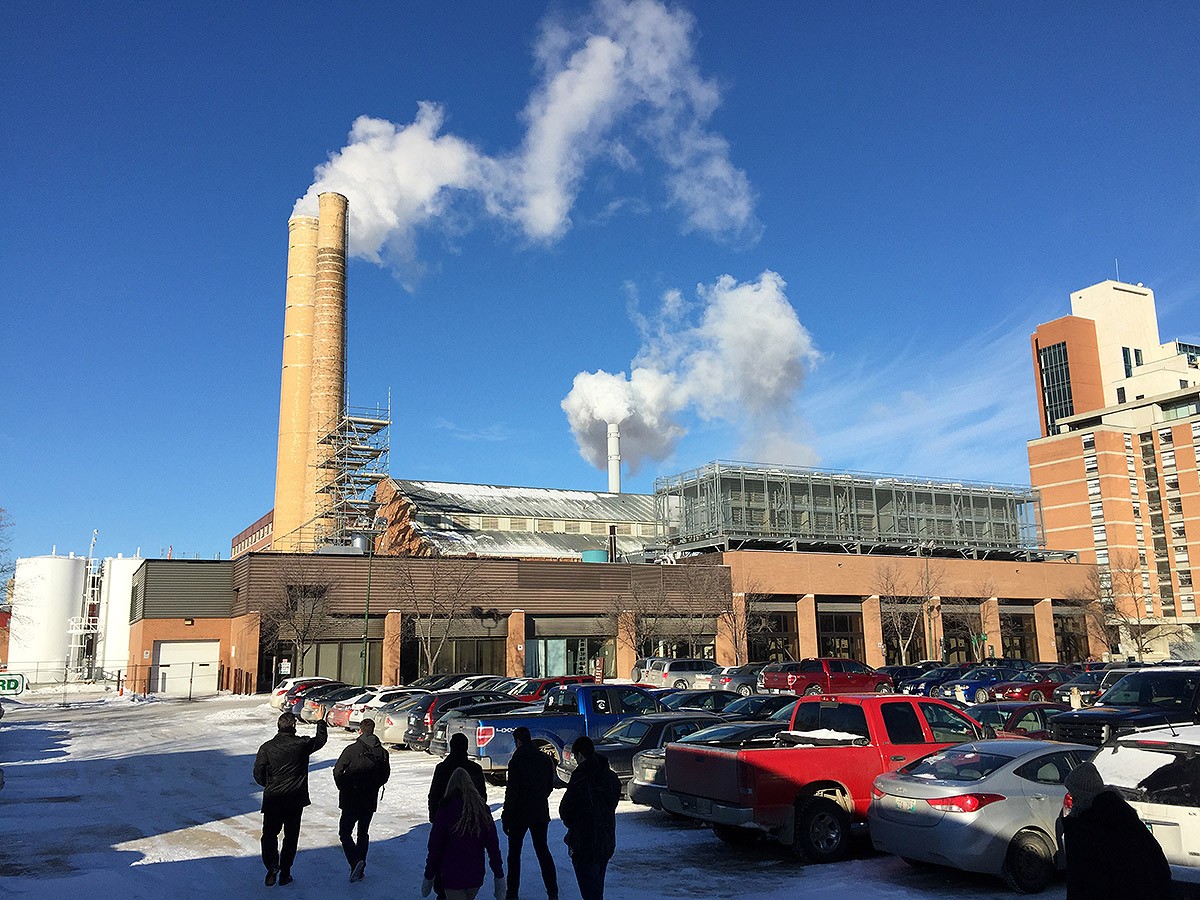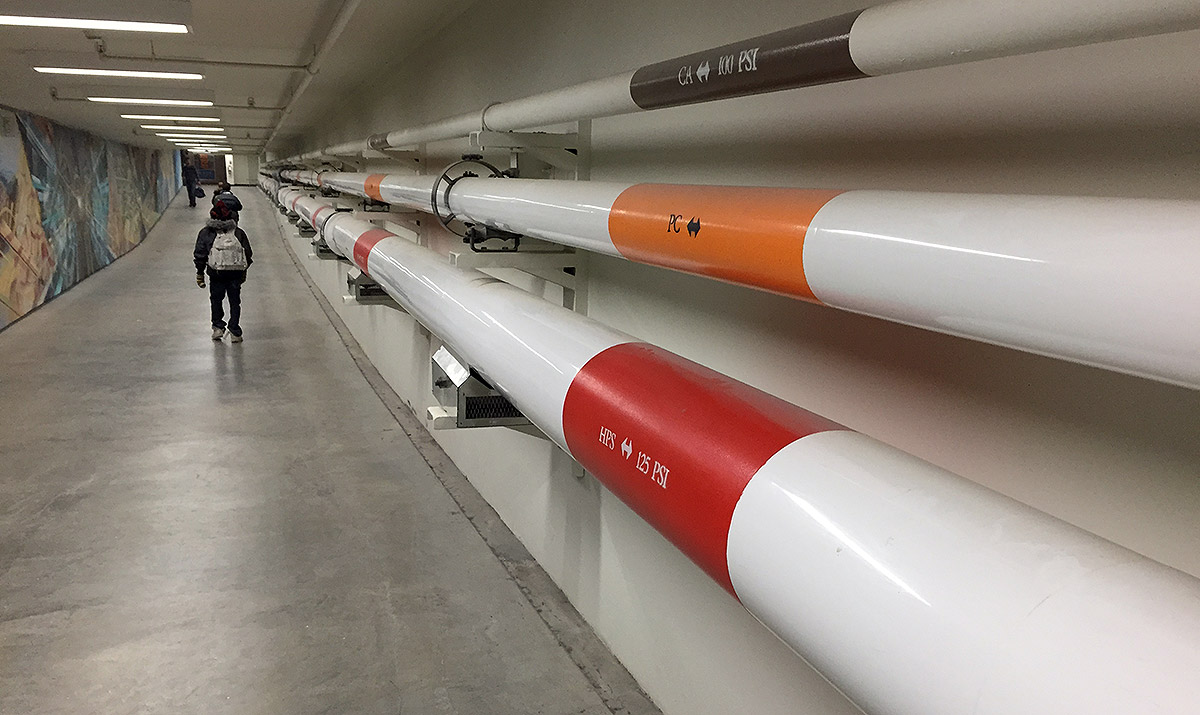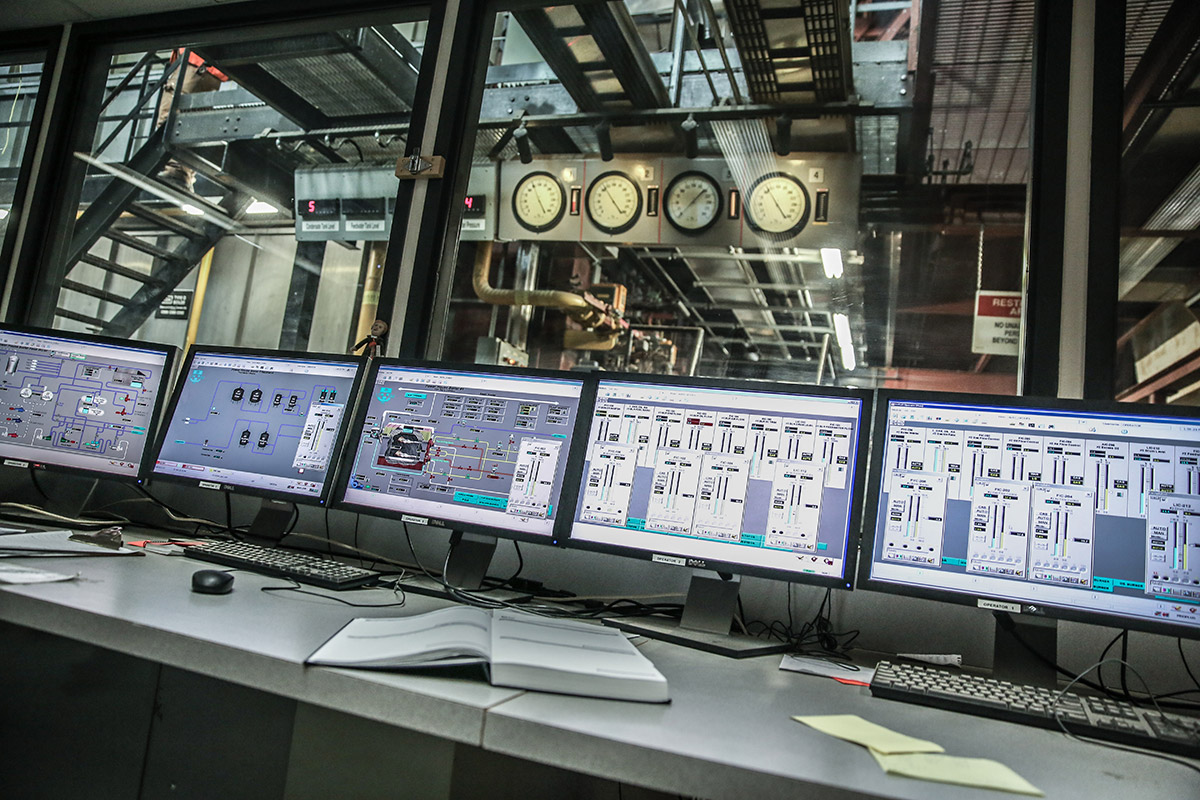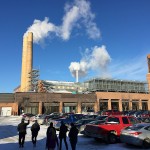
Award-winning: Keeping campus comfortable, sustainably
The team at the central energy plant works hard to deliver energy-efficient heating around campus
On one of the coldest winter days, a dense fog billows from the smoke stacks above the Central Energy Plant at the U of M’s Fort Garry Campus. The building houses the heart of the campus district heating and cooling systems, a complex menagerie of mechanical equipment that distributes heat and cooling via a network of pipes into every corner of the University.
In winter, natural gas is used to generate steam that is circulated though pipes to each building on campus. Through a network of pipes, heat exchangers and ventilation systems, the heat from the steam is transferred to classrooms, offices, and labs. In warmer months, cold water is distributed in the same way to achieve the opposite effect. The system efficiently serves a large area with a single heating and cooling source (a single ‘furnace and air conditioner’, to use a residential analogy) and can ‘push and pull’ heating and cooling based on when and where it is needed.

These pipes snake through camps to feed buildings with heat. // Photo by Eric Postma
A problem discovered two years ago in one of the boilers precipitated the latest round of upgrades. Physical Plant Energy Advocate Mike Ferley explains, “the team works very hard to keep the energy systems world-class.”
There are four boilers, ranging in age from 20 to 50 years old, in the Central Energy Plant; each is about the size of a single-car garage. Upgrades underway now will introduce two new boilers that will improve system reliability.
Each boiler ranges in capacity between 50,000 to 100,000 pounds of steam per hour. The greatest demand that the U of M has ever seen on the coldest winter day is about 140,000 pounds of steam. “What having extra capacity does is give you a bit of redundancy,” explains Ferley. “If one unit was undergoing service or failed, then you have a backup.”
Physical Plant staff oversee automated controls, real-time monitoring and heat recovery systems via the ultra-high-tech Delta V control system. Over the last 25 years dozens of energy reduction projects, many undertaken with the help of Manitoba Hydro, have contributed to incremental efficiency gains allowing the University to use 39 per cent less natural gas and 35 per cent less electricity per square foot of space today compared to 1990. This allows the university to save money that can be reinvested in other programs while reducing greenhouse gas emissions.

Advanced systems help control the energy delivery around campus. // Photo by Mike Latchislaw

The smaller stack is part of the heat recovery system that recycles residual heat from the exhaust. // Photo by Eric Postma
Ferley says that the best example of energy-efficiency at the University is in the smoke stacks above the Central Energy Plant. The smoke coming out of the tallest stack is about 150 degrees Celsius, while the smaller middle stack is about 30 degrees Celsius. That is because the middle stack is connected to a heat recovery unit (commonly referred to as a recuperator) that grabs any residual heat from the exhaust through a water shower, and sends it back into the system. The heat recovered by this one technology alone is enough to heat 240 homes for one winter.
The award
That hard work by the university has not gone unnoticed; on January 28, 2015 the Province of Manitoba recognized the U of M with a major sustainability award.
Thanks in part to 25 years of improvements to the energy efficiency of the systems on campus, the University of Manitoba was selected as a recipient of a Manitoba Excellence in Sustainability award in the category of Action on Climate Change, Air Quality and Energy Efficiency Award.
The Physical Plant staff not only keep the U of M campus comfortable, but they manage the colossal task with a keen eye on our environmental impact.
Read more about sustainability and energy use at the University of Manitoba.







